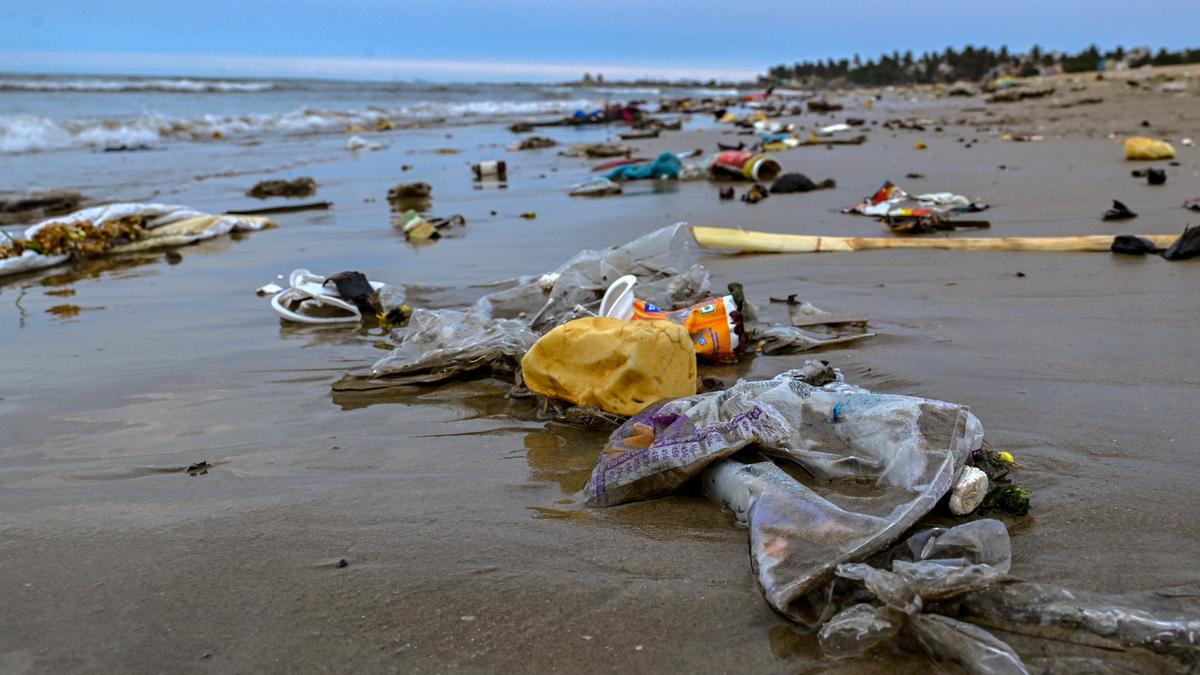Judicial Remedies and Systemic Reforms for Effective Waste Management in India

- 04 May 2025
Context:
India is currently facing an escalating waste management crisis, exacerbated by rising urbanization, inadequate infrastructure, and weak enforcement. According to a 2024 study published in Nature, India is the world’s largest plastic polluter, emitting 9.3 million tonnes (Mt) of plastic annually—nearly 20% of global plastic emissions. This is largely due to widespread mismanaged waste, including open dumping and burning.
Despite claims of 95% national waste collection coverage, the situation on the ground reveals stark contrasts. Dumpsites outnumber sanitary landfills by a ratio of 10:1, and rural areas along with the informal sector remain excluded from official data. The actual per capita plastic waste generation in India may be as high as 0.54 kg/day, much higher than the reported 0.12 kg/day.
The problem is particularly acute in ecologically sensitive areas like the Indian Himalayan Region, where data gaps, poor infrastructure, and lack of state capacity have led to severe plastic accumulation, threatening biodiversity and public health.
According to TheEnergy and Resources Institute (TERI), India generates 62 Mt of waste annually, including 5.6 Mt of plastic waste, 7.9 Mt of hazardous waste, and 1.5 Mt of e-waste. However, only 43 Mt is collected, with 12 Mt treated, and 31 Mt remains untreated in waste yards.
Institutional and Legal Framework
India has implemented several regulatory frameworks under the Environment (Protection) Act, 1986, such as the Solid Waste Management Rules (2016), Plastic Waste Management Rules (2016), and the E-Waste Management Rules (2022). The Extended Producer Responsibility (EPR) mechanism mandates producers to manage the entire lifecycle of products. As of 2022, EPR has been extended to plastic packaging, battery waste, and used oil.
Initiatives like Swachh Bharat Mission (SBM) and Waste to Wealth have promoted community engagement and technology use. SBM Urban 2.0 aims to create "Garbage Free Cities" by enhancing material recovery and waste-to-energy infrastructure. By 2024, 4.75 lakh villages had solid waste systems, and 5.14 lakh had liquid waste management systems.
Challenges
However, implementation gaps persist. Waste audits are inconsistent, especially in rural areas governed by Panchayati Raj institutions. Infrastructure for segregation, recycling, and recovery is insufficient. Establishing kiosks and MRFs in remote areas remains a logistical and financial challenge.
Way Forward: Judicial and Systemic Interventions
A promising approach is the use of continuing mandamus by the judiciary. In the 2025 Vellore District Environment Monitoring Committee vs. District Collector case, the Supreme Court emphasized remediation under the “polluter pays” principle. Judicial mandates for compliance, third-party audits, and public data transparency can significantly enhance accountability.
Technological tools like geotagging waste infrastructure on EPR portals can improve tracking and efficiency. Local bodies must be integrated with MRFs, recyclers, and EPR kiosks for seamless waste flow.
Additionally, product redesign for circularity, international cooperation through platforms like GACERE, and citizen engagement are critical to building a sustainable waste management ecosystem.
